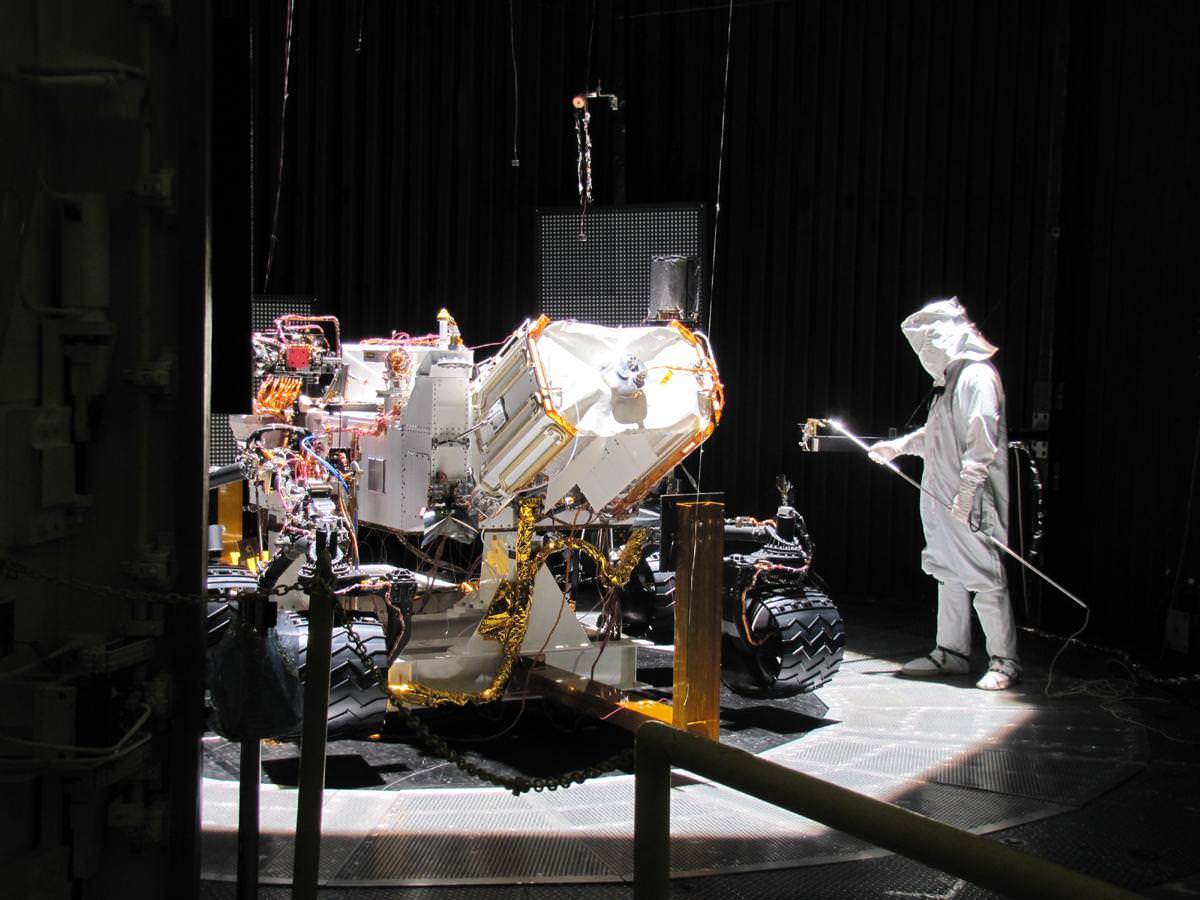[/caption]
NASA's
next
Mars rover
, named Curiosity, is now undergoing crucial tests that are designed to simulate the
harsh environmental conditions
of the
Martian surface
that awaits
the rover when she lands
there in August 2012.
Curiosity, also known as the
Mars
Science Laboratory or MSL, is the size of a mini-Cooper. It was placed inside a 7.6 meter (25 foot) diameter high vacuum chamber at
NASA's
Jet Propulsion Laboratory. Engineers are now conducting an extensive regimen of tests that will check out the performance and operational capabilities of
the rover
under
Mars-like
conditions.
[caption id="attachment_84296" align="alignleft" width="363" caption="Curiosity enters the 7.6-meter-diameter space-simulation chamber on March 8, 2011 at NASA's Jet Propulsion Laboratory, Pasadena, Calif. The rover is fully assembled with all primary flight hardware and instruments. The test chamber's door is still open in this photo. Credit: NASA/JPL-Caltech"]
[/caption]Since the atmosphere of
Mars
is very thin - roughly 0.6% compared to Earth - most of the air was pumped out to simulate the meager atmospheric pressure on
the surface of Mars
.
The internal chamber temperature was decreased to minus 130 degrees Celsius (minus 202 degrees Fahrenheit) using liquid nitrogen flowing through the chamber walls to approximate the Antarctic like bone chilling cold. Martian lighting conditions are being simulated by a series of powerful lamps.
Upon successful completion of the testing, all components of the MSL
spacecraft system
will be shipped to the
Kennedy Space Center
for final integration. This includes the cruise stage, descent stage and back shell.
The
launch window
for MSL extends from Nov. 25 to Dec. 18, 2011 atop an
Atlas V rocket
from pad 41 at
Cape Canaveral, Florida
.
MSL will land using a new and innovative sky crane system instead of airbags. Using the helicopter-like sky crane permits the delivery of a heavier rover to Mars and with more weight devoted to the science payload. Indeed the weight of Curiosity's
science payload
is ten times that of any prior
Mars rover
mission.
[caption id="attachment_84287" align="aligncenter" width="580" caption="Artist's concept illustrates Mars rover Curiosity traversing across martian surface. Credit: NASA/JPL-Caltech"]
[/caption]
MSL also features a precision
landing system
to more accurately guide the rover to the desired target than past missions, to within an ellipse about 20 kilometers long. After extensive evaluation, four
landing
sites where water once flowed have been selected for further evaluation. The final decision will come sometime in 2011.
Curiosity is about twice the size and four times the weight compared to NASA's
Spirit
and
Opportunity
Mars Explorations Rovers which landed on Mars back in 2004. Opportunity continues to stream back science data from Mars after seven years. The
fate of Spirit
is unknown at this time as the plucky rover has been out of contact since entering hibernation in March 2010.
The
science
goal of Curiosity is to search the landing site for clues about whether environmental conditions favorable for microbial life existed in the past or even today on Mars and whether evidence for life may have been preserved in the geological record.
The rover is being targeted to an area where it is believed that liquid water once flowed and may be habitable. In particular the science teams hope to sample and investigate phyllosilicate clays, which are minerals that form in neutral watery conditions more favorable to the formation of life compared to the more acidic environments investigated thus far by Spirit and
Opportunity
.
[caption id="attachment_84298" align="aligncenter" width="580" caption="Engineers work on the six wheeled Curiosity rover in a clean room at NASA's Jet Propulsion Laboratory. Credit: NASA/JPL-Caltech"]
[/caption]
 Universe Today
Universe Today
